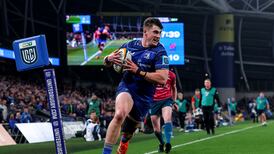World Rugby has announced a reduction in concussion incidents at last year’s World Cup in comparison to the 2018 elite competition average.
The tournament in Japan — the first World Cup to feature the High Tackle Sanction Framework — delivered an overall concussion incidence decrease of 28 per cent and a 37 per cent reduction in tackle concussion incidence.
The framework, which provides a step-by-step method for grading and sanctioning a high tackle, was designed to help reduce concussion risk by changing player behaviour from high-risk upright to lower-risk bent-at-the-waist tackles.
World Rugby said the Japan 2019 outcomes “indicate promising early signs that the framework approach is effective”.
Yellow card sanctions at the tournament increased by 74 per cent and red cards by 138 per cent compared to the 2018 elite competition average, with the governing body saying the “tough deterrent was a direct contributing factor” to the reduction in concussions.
World Rugby also said Japan 2019 saw an overall reduction in injuries from 90 injuries per 1,000 player hours in 2015 to 83 injuries per 1,000 player hours, while injury replacements per match reduced from 2.08 in 2015 to 1.13 in 2019.
World Rugby chairman Bill Beaumont said: “These hugely encouraging outcomes of this study endorse our unwavering evidence-based commitment to injury prevention, particularly our continued efforts to protect players from concussive events on the rugby field wherever possible.
“The significant reduction in concussion incidence provides compelling evidence of what can be achieved when competition owners, match officials, disciplinary officers, players and coaches fully buy in to the High Tackle Sanction Framework. Failure to do so can have significant player welfare and performance consequences.”



















